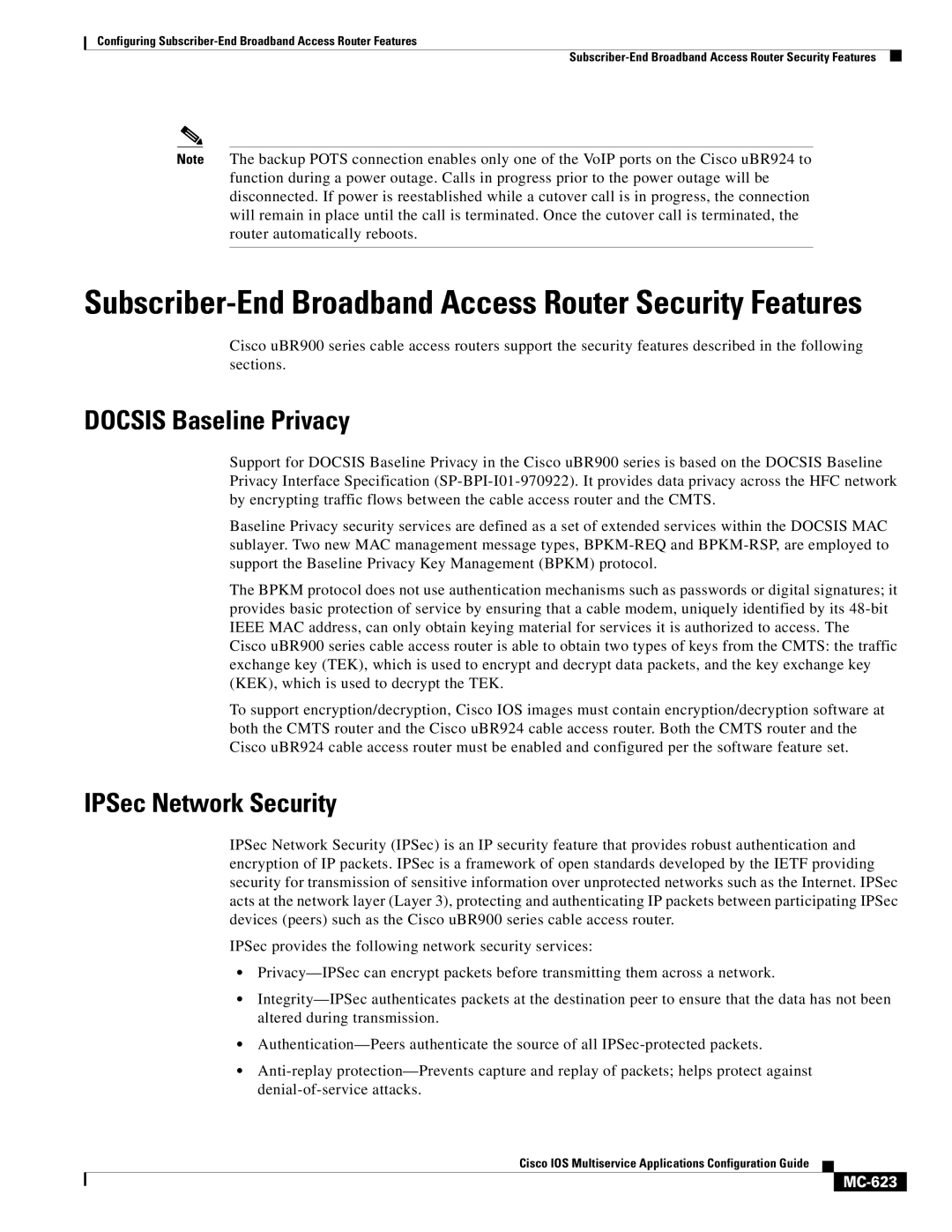
Configuring
Note The backup POTS connection enables only one of the VoIP ports on the Cisco uBR924 to function during a power outage. Calls in progress prior to the power outage will be disconnected. If power is reestablished while a cutover call is in progress, the connection will remain in place until the call is terminated. Once the cutover call is terminated, the router automatically reboots.
Subscriber-End Broadband Access Router Security Features
Cisco uBR900 series cable access routers support the security features described in the following sections.
DOCSIS Baseline Privacy
Support for DOCSIS Baseline Privacy in the Cisco uBR900 series is based on the DOCSIS Baseline Privacy Interface Specification
Baseline Privacy security services are defined as a set of extended services within the DOCSIS MAC sublayer. Two new MAC management message types,
The BPKM protocol does not use authentication mechanisms such as passwords or digital signatures; it provides basic protection of service by ensuring that a cable modem, uniquely identified by its
To support encryption/decryption, Cisco IOS images must contain encryption/decryption software at both the CMTS router and the Cisco uBR924 cable access router. Both the CMTS router and the Cisco uBR924 cable access router must be enabled and configured per the software feature set.
IPSec Network Security
IPSec Network Security (IPSec) is an IP security feature that provides robust authentication and encryption of IP packets. IPSec is a framework of open standards developed by the IETF providing security for transmission of sensitive information over unprotected networks such as the Internet. IPSec acts at the network layer (Layer 3), protecting and authenticating IP packets between participating IPSec devices (peers) such as the Cisco uBR900 series cable access router.
IPSec provides the following network security services:
•
•
•
•
Cisco IOS Multiservice Applications Configuration Guide
